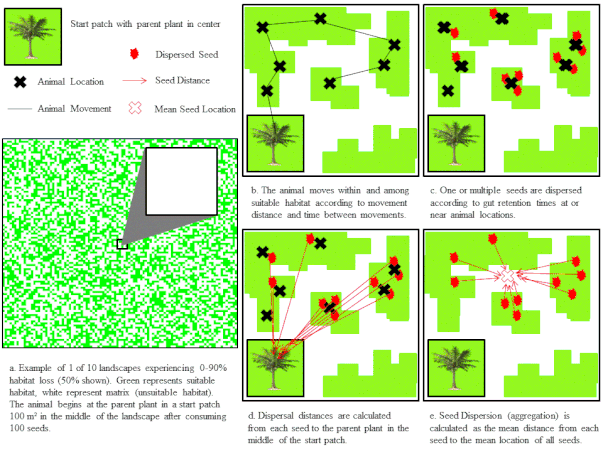Spatial, Movement, and Quantitative EcologyAnimal movements and spatial use structure ecological communities. Understanding the effects and drivers behind these processes provides critical information in a changing world. My research centers on testing hypotheses and answer questions about spatial ecology and animal movements using quantitative tools, particularly in heterogenous landscapes. I rely on a combination of fieldwork and spatial modeling to conduct my research.
My PhD research focused on modeling spatial patterns of animal seed dispersal. For my dissertation, I conducted fieldwork on toucans and seed dispersal in a fragmented agricultural landscape in Costa Rica. I created a spatially-explicit, individual-based model (SEADS) to explore patterns of seed dispersal in theoretical and empirical systems. Past postdoctoral research centered on bobcat (Lynx rufus) spatial ecology and movement modeling in Indiana, at Purdue University. I am currently a postdoctoral research associate at Mississippi State University studying best practices for using drones to conduct animal surveys and study spatial their spatial ecology. Feel free to contact me at the following email address: landon.jones at msstate.edu |
Toucan Photos by Maxime Aliaga


